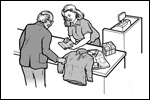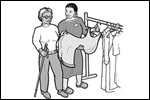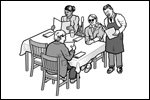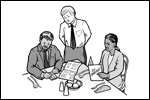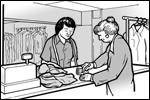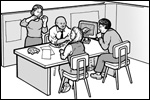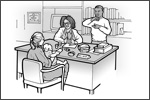



banner.jpg)

More information
Summary of Lesson Two
The ADA expects businesses to communicate effectively with people who have have vision, hearing, or speech disabilities. When necessary, businesses must provide communication aids or services in order to communicate effectively.
It is up to the business owner or manager to decide what technique is appropriate, depending on the nature of the communication and the customer’s normal method of communication.
Businesses are not expected to provide any communication aid or service that would fundamentally alter the nature of the business’s goods and services or that would cause an undue burden.
Methods for communicating with customers who are blind or have low vision include: having staff read printed information to the customer; providing the information in large print, in Braille, on a computer disk, or in an audio format so the customer can read or listen to it; or assisting the customer in finding an item or in manuevering through your business’s space.
Methods for communicating with customers who are deaf or hard of hearing include: using gestures, writing notes, providing printed information, using a sign language interpreter, using an oral interpreter, or using a real-time captioning service.
Methods for communicating with customers who have speech disabilities include: reading notes written by the customer, or reading or listening to words communicated by the customer’s communication board.
Generally, a sign language interpreter is required when a customer’s primary method of communication is sign language and the information is so complex or lengthy that sign language is required to communicate effectively.
The telecommunications relay service (TRS) is a free nationwide service that enables people who use telephones to communicate with people who use TTYs.
Questions:
1. A customer who is deaf comes into a flower shop and wants to order flowers. How does the clerk communicate with the customer?
2. A couple goes to dinner at a restaurant. The wife is blind. How does the restaurant let her know what is on the menu?
3. A man who is deaf has a presurgery meeting with his physician. The man uses sign language to communicate. How does the doctor explain the surgical procedures and answer questions?
4. A clerk at a take-out restaurant answers the telephone. He hears, “This is relay CA #__________. Have you received a relay call before?” What does he do?
5. Where will you look for information about obtaining the communication services discussed in this lesson?





